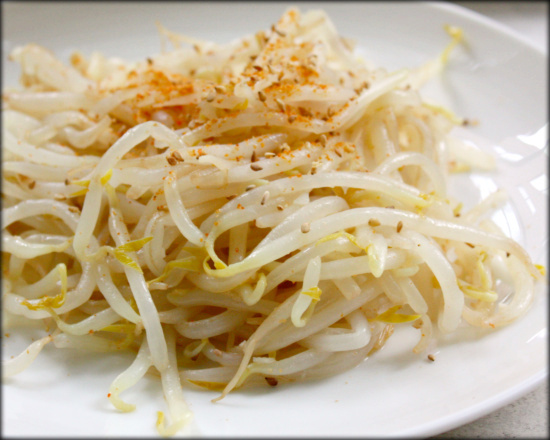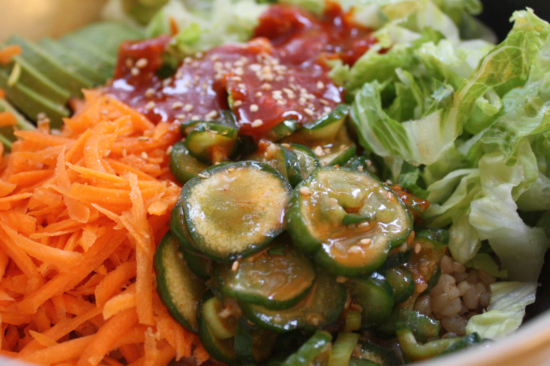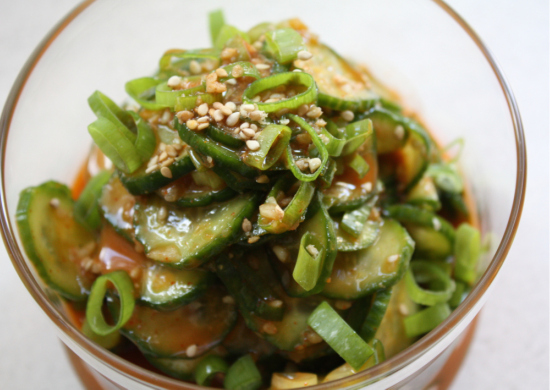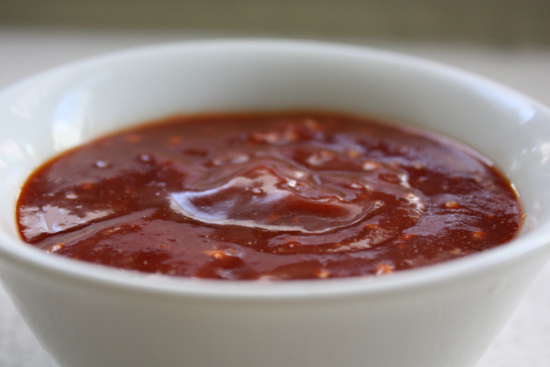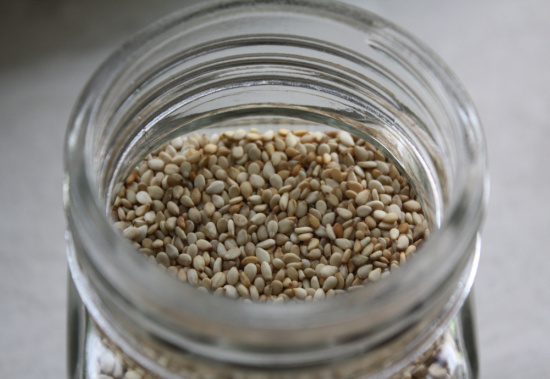All those side dishes you get when you eat at a Korean restaurant? Those dishes, along with the seemingly infinite number of other Korean side dishes, are collectively called banchan. And many of those banchan are used to make traditional bibimbap. I made No-Cook Vegan Bibimbap last week, but now that the temperature has gone down a little bit in NYC, I’m hankering for a traditional bibimbap. So this week, I will prepare some of the vegetable banchan required for the recipe. Sukju Namul (or Sookju Namul), Korean Seasoned Mung Bean Sprouts, is first on the list.
I love Sukju Namul. Whenever there was a traditional Korean function, my grandmother always made this. There are many ways to serve this dish. You can simply serve it with warm rice. You can add it as an ingredient in bibimbap. You can also put it in Moo Guk (Korean radish soup). In fact, when my grandmother used to make this for the traditional ancestral remembrance celebration (“Jaesa”), we used to eat it with Moo Guk on the day of the celebration, in bibimbap the next day, and as a side dish(banchan) the day after if we had any left. It’s a really versatile, simple, and healthy dish.

